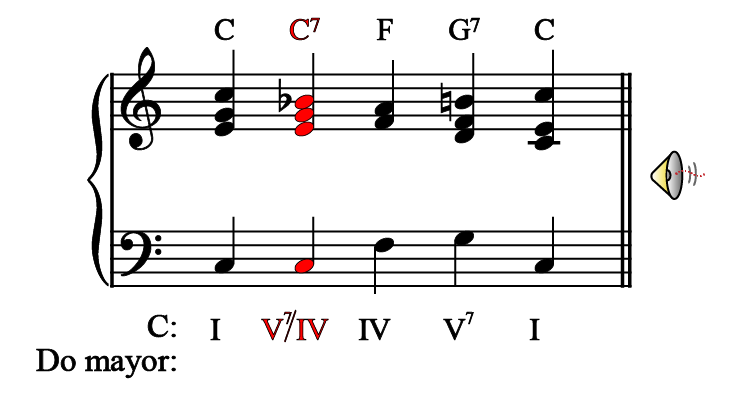Are you hoping to find 'how to write secondary dominants'? You can find all the information on this website.
Authorship Secondary DominantsFind the the root of the chord aft the secondary ascendant (the Roman definite quantity under the slash). It is letter a major or secondary triad.Find the auction pitch a P5 preceding the root. This is the ascendant of the auxiliary dominant. ...Build letter a dominant seventh harmonize or major common chord on this auction pitch. (Accidentals!)Resolve the note 7th (down) and the secondary leading-tone (up).
Table of contents
- How to write secondary dominants in 2021
- Secondary dominant chords music theory
- Secondary dominant examples
- Secondary dominants music theory
- Secondary dominant chord examples
- Secondary dominant chord calculator
- Secondary dominants pdf
- Secondary dominants worksheet with answers
How to write secondary dominants in 2021
 This image demonstrates how to write secondary dominants.
This image demonstrates how to write secondary dominants.
Secondary dominant chords music theory
 This picture demonstrates Secondary dominant chords music theory.
This picture demonstrates Secondary dominant chords music theory.
Secondary dominant examples
 This image illustrates Secondary dominant examples.
This image illustrates Secondary dominant examples.
Secondary dominants music theory
 This image illustrates Secondary dominants music theory.
This image illustrates Secondary dominants music theory.
Secondary dominant chord examples
 This image illustrates Secondary dominant chord examples.
This image illustrates Secondary dominant chord examples.
Secondary dominant chord calculator
 This image shows Secondary dominant chord calculator.
This image shows Secondary dominant chord calculator.
Secondary dominants pdf
 This image demonstrates Secondary dominants pdf.
This image demonstrates Secondary dominants pdf.
Secondary dominants worksheet with answers
 This image representes Secondary dominants worksheet with answers.
This image representes Secondary dominants worksheet with answers.
How are secondary dominants written in Roman numerals?
Use Up/Down Arrow keys to increase or decrease volume. As reflected in the Roman Numeral Analysis, secondary dominants are typically written as V/target chord, in this case, V/V. Said aloud, it reads, “five of five.” We’ve left the chords in root position for clarity, but now let’s add some better voice leading with a few inversions.
How to use secondary dominants in a song?
The topic of secondary dominants can take up considerable study in music courses, but here’s a simple way for songwriters to understand and use them: Take any chord that is usually minor in your chosen key. Change it to major. Follow it with a chord whose root is 4 notes higher or 5 notes lower.
Which is the best definition of a secondary dominant?
SECONDARY DOMINANTS (APPLIED DOMINANTS) DEFINITION: A secondary dominant is an altered chord having a dominant or leading tone relationship to a chord in the key other than the tonic. An altered chord is a chord containing at least one tone that is foreign to the key. Using secondary dominants results in the tonicizationof the chord of resolution.
How to add a secondary dominant to your chord progression?
Take any chord that is usually minor in your chosen key. Change it to major. Follow it with a chord whose root is 4 notes higher or 5 notes lower. For example, let’s say that you’ve been playing around with this progression: Take a look at the Am chord.
Last Update: Oct 2021